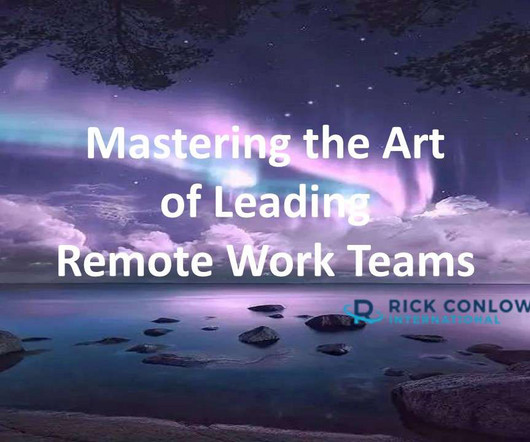4 Field-Tested Steps to Organize Talent as a CPO
LSA Global
MAY 10, 2022
The Role of Chief People Officers (CPOs) In essence, CPOs are responsible for attracting, developing, engaging, and retaining the top talent required for the business to meet its strategic objectives in a way that makes sense for the people AND the business. They need to be able to follow the steps to organize talent as a CPO.



























Let's personalize your content